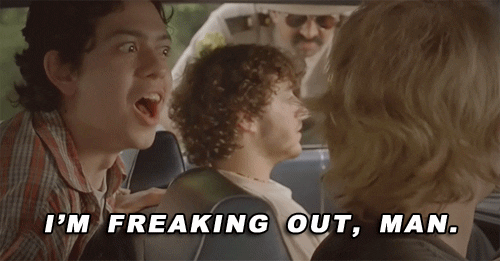Bullet Club
Banned
Man Restoring A Classic Synthesiser Goes On A 9-Hour Acid Trip After Accidentally Touching LSD-Covered Knob

There are plenty of wild rumours, mythologies, and eyebrow-raising stories from the long history of music, including claims that parts of synthesizers designed by electronic music pioneer Don Buchla had been dipped in LSD. But as engineer Eliot Curtis recently discovered, those claims might actually hold some truth.
Curtis, a Broadcast Operations Manager at the KPIX 5 CBS affiliate in San Francisco, volunteered to fix and restore a Buchla Model 100 modular synthesiser which was owned by Cal State University. The school's music department, led by professors Glenn Glasow and Robert Basart, had originally purchased the instrument in the '60s to help the institution stay on top of recent radical changes in the music industry, but over time the synthesiser fell out of use, broke down, and was eventually stored away in the corner of a classroom.
As Curtis was disassembling a module that appears to have been added to the Buchla Model 100 after it was delivered to the school, he noticed a crystal-like residue stuck under one of the instrument's knobs. In an attempt to dislodge it, he blasted it with cleaning solvent and tried to simply rub it off with his finger. Forty-five minutes later, he started to experience a tingling sensation, the beginnings of an acid trip, that would last nine hours. Three separate chemical tests later identified the crystallised substance as lysergic acid diethylamide—or LSD—which can be absorbed through the skin, and can survive for decades.
Given the age of the synthesiser and the decades that have passed since the school purchased the instrument, it's not known where the added module came from. Both professors have unfortunately passed away, and there are no records indicating what upgrades were made to the Buchla Model 100 in the years following the school first installing it.
Was it intentionally soaked in LSD as other instruments were rumoured to have been back in the '60s? Probably not. San Francisco was the epicentre of the drug culture in the '60s, and musicians were no strangers to partaking in substances like LSD. The previous owner may have just accidentally spilled some on the added module or had to quickly sweep some away, not giving much thought to whose hands the instrument might eventually fall into.
Source: Gizmodo

There are plenty of wild rumours, mythologies, and eyebrow-raising stories from the long history of music, including claims that parts of synthesizers designed by electronic music pioneer Don Buchla had been dipped in LSD. But as engineer Eliot Curtis recently discovered, those claims might actually hold some truth.
Curtis, a Broadcast Operations Manager at the KPIX 5 CBS affiliate in San Francisco, volunteered to fix and restore a Buchla Model 100 modular synthesiser which was owned by Cal State University. The school's music department, led by professors Glenn Glasow and Robert Basart, had originally purchased the instrument in the '60s to help the institution stay on top of recent radical changes in the music industry, but over time the synthesiser fell out of use, broke down, and was eventually stored away in the corner of a classroom.
As Curtis was disassembling a module that appears to have been added to the Buchla Model 100 after it was delivered to the school, he noticed a crystal-like residue stuck under one of the instrument's knobs. In an attempt to dislodge it, he blasted it with cleaning solvent and tried to simply rub it off with his finger. Forty-five minutes later, he started to experience a tingling sensation, the beginnings of an acid trip, that would last nine hours. Three separate chemical tests later identified the crystallised substance as lysergic acid diethylamide—or LSD—which can be absorbed through the skin, and can survive for decades.
Given the age of the synthesiser and the decades that have passed since the school purchased the instrument, it's not known where the added module came from. Both professors have unfortunately passed away, and there are no records indicating what upgrades were made to the Buchla Model 100 in the years following the school first installing it.
Was it intentionally soaked in LSD as other instruments were rumoured to have been back in the '60s? Probably not. San Francisco was the epicentre of the drug culture in the '60s, and musicians were no strangers to partaking in substances like LSD. The previous owner may have just accidentally spilled some on the added module or had to quickly sweep some away, not giving much thought to whose hands the instrument might eventually fall into.
Source: Gizmodo



